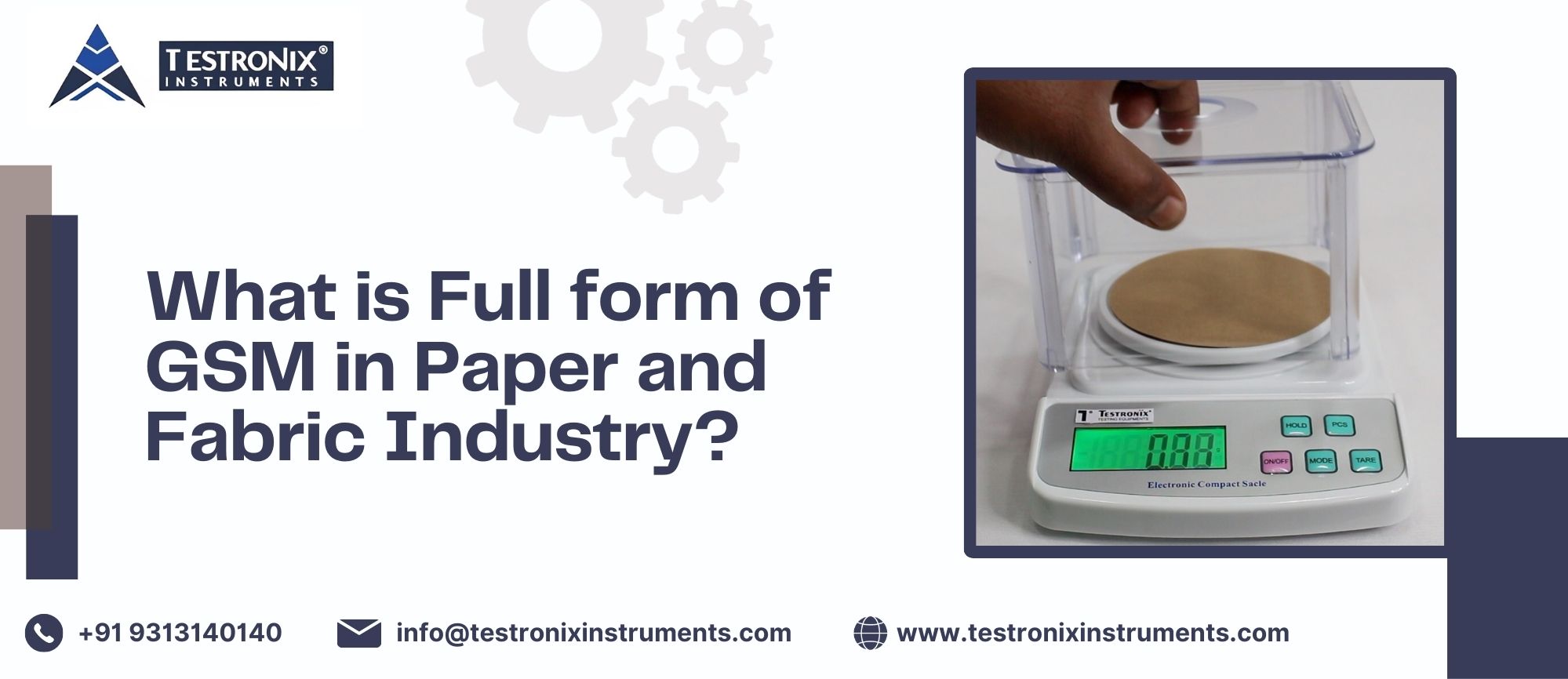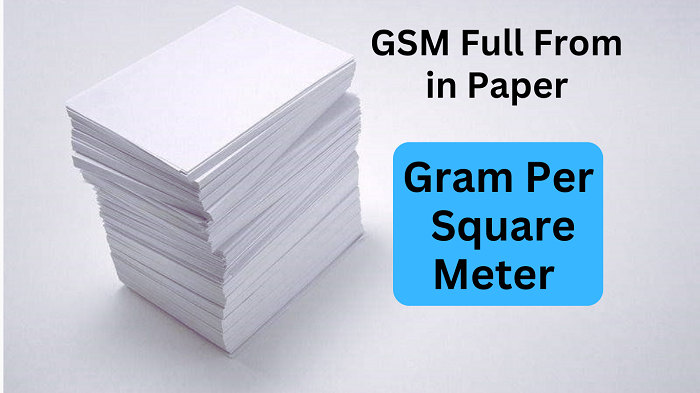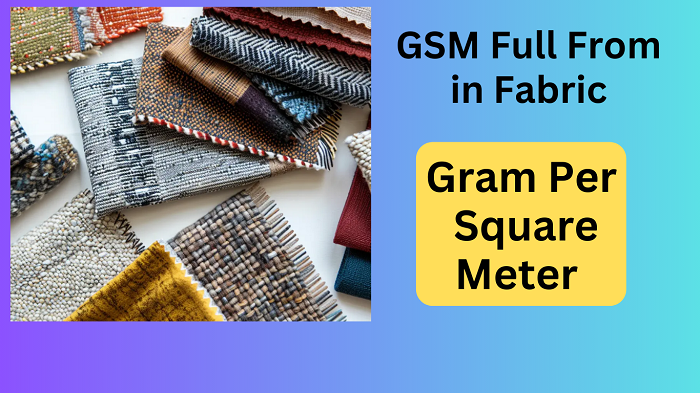Reviewed by Anurag Mishra (Sr. Technical Consultant)

In both the paper and fabric industries, the term GSM is a necessary metric used to evaluate the quality and suitability of products. The full form of GSM is “Gram per Square Meter”, GSM provides a universal measure of material weight, which affects factors like thickness, durability, and application of the product. GSM helps manufacturers meet quality standards.

The full form of GSM is “Gram per Square Meter” in the paper industry, it’s a universal measurement unit used to determine the thickness, density, and weight of paper.
The GSM value is essential in the printing, packaging, and manufacturing of paper, as it determines the quality of paper, suitability of paper for different applications, and cost of paper.
In the paper industry, the full form of GSM is Gram per Square Meter which determines the quality of paper. It evaluates the paper’s thickness, density, and weight. Different types of papers have different GSM values that define their usage, from lightweight printing paper to heavier, more durable packaging materials.
Understanding the importance of GSM industries can ensure the selection of the perfect paper that matches quality, strength, and cost-effectiveness for their needs. GSM is important in the paper industry due to the following factors:
Durability and Strength: Papers of high GSM value are thicker and resistant to damage. High GSM papers are used in packaging and premium printing projects.
Printing Quality: The weight of the paper influences how ink holds on paper and the quality of the final print. High GSM papers hold ink better and give bright and clear prints.
Paper Appeal: Premium papers are generally thicker and enhance the visual appeal of printed materials and packaging.
Cost Efficiency: GSM can also determine how much paper is required for specific use. It reduces overall cost and waste in bulk production.
Functionality: Certain GSMs are better suited for specific applications—low GSM for single-use items like flyers and high GSM for high-quality products like business cards and posters.
Selecting the right GSM in the paper industry involves understanding the requirements of the project and how the paper aligns with those requirements. Here are factors to consider when choosing the right GSM as per your needs:
Purpose of Use: Different GSM papers are used in different applications. Analyze your requirements and choose the right paper for your purpose.
Printing Method: There are 2 types of printing available in the paper industry: inkjet and laser. The inkjet printing method is used on low GSM value papers for bulk production of paper where quality doesn’t matter. The laser printing method is used on heavier or high GSM paper for premium-quality print and text.
Visual and Feel Requirements: Determine how you want your print to look and feel on the paper, then choose the appropriate GSM paper.
Cost vs. Quality: Evaluate the cost and quality, as high GSM papers are good in quality but more expensive, while low GSM papers are cost-effective and low in quality. Consider a balance of cost and quality for more efficiency.

The full form of GSM in fabric industry is “Gram per Square Meter”, a standard unit of measurement to determine the weight and density of the fabric. It is defined as the weight of 1 square meter of fabric. GSM in fabric industry is an important factor in determining the fabric's quality, durability, and suitability for a particular use.
GSM in fabric industry refers to the weight of the fabric. Understanding GSM helps manufacturers, designers, and consumers identify the fabric’s thickness and density. GSM is essential because it provides a standard comparison between different types of fabrics.
Lightweight Fabrics (100-150 GSM): Low GSM or lightweight fabrics are used for summer clothes, like T-shirts, and soft clothes. These fabrics are breathable and delicate.
Medium Weight Fabrics (150-300 GSM): Mid-GSM or mediumweight fabrics are often used for casual clothing, like shirts, and light outerwear. They provide a balance between comfort and durability.
Heavyweight Fabrics (300+ GSM): High GSM or heavyweight fabrics are commonly used in jackets, upholstery, and industrial applications. These are strong, durable, and insulating materials.
GSM in fabric industry is important to determine the quality, thickness, and density of a fabric. Determining the GSM of fabric helps in identifying the right fabric for your purpose. Factors that make GSM important in fabric industry:
High GSM fabrics are thicker, stronger, and more durable, suitable for applications like upholstery or winter wear. On the other hand, low GSM fabrics are lighter and more suitable for soft and summer clothing.
Lightweight fabrics are better breathable and often used for warmer weather, while heavyweight fabrics provide warmth and insulation in winter conditions.
GSM of fabrics directly affects the cost. High GSM fabrics need more raw materials which increases production cost, but they also provide durability and value.
GSM directly affects fabric costs. Heavier GSM fabrics require more raw material, increasing production costs, but also offer better longevity and value.
Using GSM, manufacturers can maintain consistent quality in the production batches, ensuring reliability and customer satisfaction.
Choosing the right GSM in fabric industry depends on the application of the fabric and its characteristics. Here are important factors in choosing the right GSM for your needs: